
What a treat! PlayStation.Blog’s well-liked Behind the Classics series continues with an inside story behind another iconic PlayStation series, this time from celebrated developer Insomniac Games. The Burbank-based studio has produced a slew of memorable PlayStation titles, from the beloved PSone platformer Spyro the Dragon to the soulful PS3 shooter Resistance 3. But in 2002, Insomniac captivated both mainstream and hardcore gamers with the introduction of Ratchet & Clank, a technically peerless shooter-platformer hybrid that radiated style and spunk.
With November 4th marking the 10-year anniversary of Ratchet & Clank’s release on PS2, PlayStation.Blog caught up with Ted Price, Insomniac Games’ president and CEO, to learn more about how this impactful PlayStation powerhouse came to be. To learn more about the development of this classic series, be sure to check out our recent post that showcases 10 years of concept art.
PlayStation Blog: What was the original base concept for the game?
“He cited Marvin the Martian as inspiration.”
Ted Price, President and CEO, Insomniac Games: After deep-sixing the concept we called “Girl with a Stick,” we had to come up with something else, and we had to do it quickly. Brian Hastings, our chief creative officer, suggested we make a game about a spacefaring alien who has an outlandish arsenal of gadgets and weapons, citing Marvin the Martian as inspiration. That idea clicked with everyone and we all started digging in to flesh out the concept.
PSB: Did you know you were working on something special? What were your creative conditions as you worked on it – uncertainty, confidence, terror?
TP: I don’t think we ever know something is truly special until well after the initial inspiration. Sometimes we get that “Yes, this is working!” feeling early in prototype phase, sometime it hits during production. With Ratchet though, we knew we had something promising when we built a test for Metropolis – one of the first worlds you visit in the game. We had Ratchet running around on platforms looking out over this vast city with streams of airborne traffic whizzing by. You could switch between the “suck cannon,” “pyrocitor,” the wrench and (I think) the blaster. It was a lot of smoke and mirrors because we weren’t using our final engine. We didn’t build out the backs of buildings, you could only travel a few meters in the world, and Ratchet was in his “brown” state, and I don’t recall having any enemies. But it convinced us and Sony of the potential for the game.
PSB: Did you draw inspiration from anywhere in particular for the game’s look and feel?
“What you see is a result of our team having fun.”
TP: We drew from all sorts of sources. Cartoons, sci-fi movies, popular culture… There were certainly some direct playful references to other properties in both the initial concepts and in subsequent games. Captain Qwark was partially inspired by The Tick. Metropolis with its flying cars and city canyons is reminiscent of The Fifth Element. Courtney Gears from Up Your Arsenal was a riff on Britney Spears, who was popular at the time. But these are exceptions rather than the rule: Most of what you see in the games is a direct result of our team just having fun in a universe with very few constraints.
PSB: It was an ambitious title for its time. What were the biggest challenges in realizing your original vision?
TP: Controlling scope was (and still is) our biggest challenge. We were moving onto a new platform with a new IP and we had very little time to get it done. We knew we needed to be ambitious for the game to stand out. But we also knew that if we spread ourselves too thin with too many features, the game would be half-baked. Dealing with this conundrum hasn’t gotten any easier over the years because players’ expectations continue to skyrocket for all platforms.
PSB: How close to your original concept was the finished game?
TP: It depends. Some of us consider “Girl with a Stick” as an important part of the Ratchet genesis, and Ratchet & Clank does owe some its mechanics and ideas to that concept. With that in mind, both Ratchet and Resistance went through drastic changes on their way to their final incarnations. However, once we had Ratchet up and running on the PS2, the changes were less severe. Ratchet did change in appearance along the way. When I look back at the original model versus what ended up in the final game, I see a big difference. We also continued to add mechanics to the game as we figured out what worked and what didn’t.“We were yearning to jump back into the realm of oversized, overpowered weapons.”
PSB: Which element of the game are you most proud of?
TP: The crazy weapons! Coming off of Spyro, a series where the main character couldn’t use weapons other than his breath and his horns. I think a lot of us were yearning to jump into back into the realm of oversized, overpowered projectile weapons. We spent some time in that world with Disruptor but took a four-year break while focusing on purple quadrupeds with Spyro. We also latched onto weapons as a way to separate Ratchet from other platformers, which seemed perennially tied to bonking, bouncing, and punching. Finally, in my opinion, creating weapons without any real-world rules gave us a chance to operate at max creativity –- which is ultimately the goal for a lot of us in this industry. It really didn’t matter WHAT the weapon was, as long as it was satisfying and fun to use we knew we’d be able to make it fit.
PSB: How would you like Ratchet & Clank to be remembered? What did it bring to the video game medium?
TP: Ratchet is still alive and well, with Full Frontal Assault coming out in a few weeks. A lot of us at Insomniac are very proud that Ratchet & Clank is one of the last platformers standing and still going strong. And we all like to think that Ratchet has contributed to the evolution of platformers and action games in general over the last decade and a half. As a minor example, seeing radial quick-select menus in other games is a compliment to us because I think Ratchet was the first to have one (though I could be wrong). And I’m still waiting to see a sheepinator in another game. To be fair though, I think Heretic (1994) and Hexen (1995) were the first games to have weapons which turned enemies into farm animals!PSB: Which of the Ratchet & Clank characters is closest to your heart?
TP: Captain Qwark. I love him because he’s always larger than life, always 100% sure of himself, and usually wrong. My wife tells me she knows people like that. Still trying to figure out who she’s talking about.



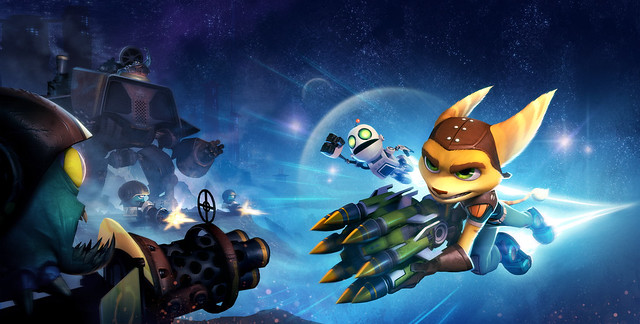
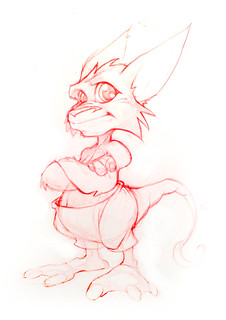

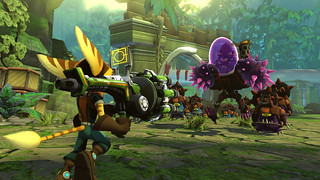
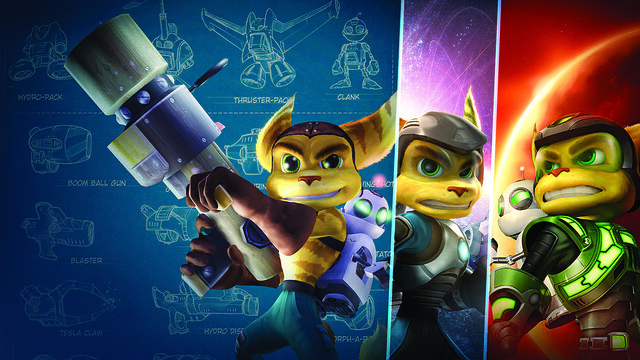
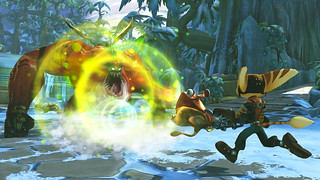
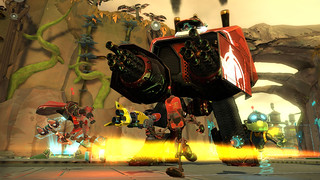








Comments are closed.
26 Comments
Loading More Comments